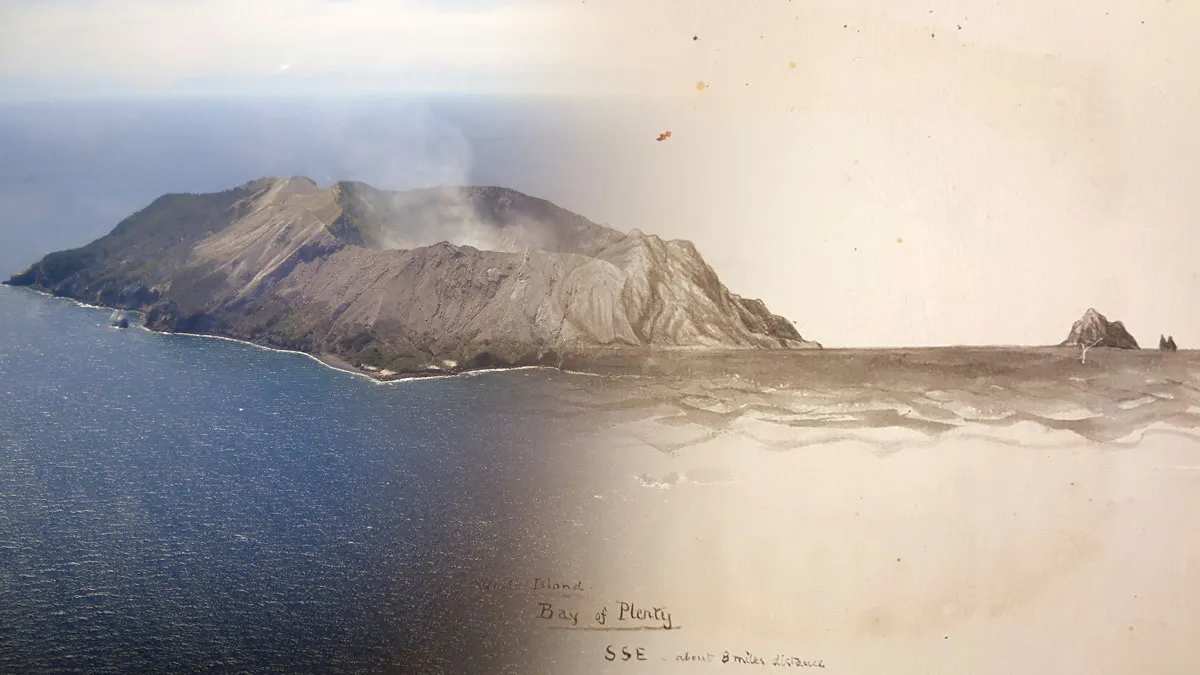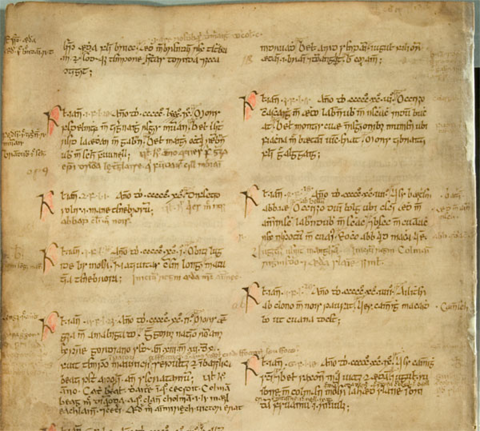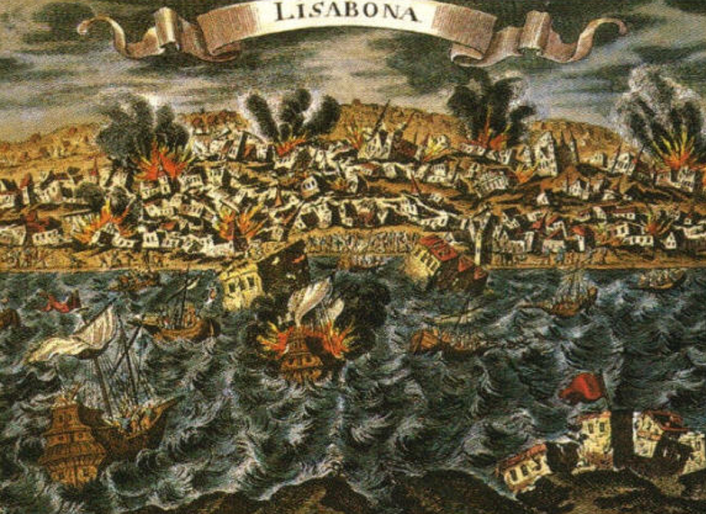
In Native Hawaiian Pelehonuamea chants, several verses describe a fight between Pele, goddess of fire and volcanoes, and her youngest sister, Hi‘iaka: In a jealous rage, Pele burns the forest that Hi‘iaka loved, then kills her lover and throws him into the Kīlauea volcano. Jumping in, Hi‘iaka starts digging to find him—but carefully; if she digs too deep, water will bubble up and put out the fire of Pele.
Native Hawaiians view such stories as important and instructive and have passed them down through generations. But when white missionaries came to the islands in the 19th century, they dismissed such chants and stories as primitive narratives. Not long after Hawai‘i was colonized, the modern academic discipline of geology developed, and Western scientists began chipping away at the islands’ old lava flows, studying rift zones and escaping gases. Through these and other methods, they “discovered” what had already been reported in the chants: Sometime during the 15th century, a huge lava flow covered Wao Kele O Puna, a lowland tropical rain forest along Kīlauea’s East Rift Zone, and groundwater interacting with hot magma caused a steam explosion that helped form the volcano’s current caldera.
As ecologist and Hawaiian Volcano Observatory volcanologist emeritus Don Swanson said at a U.S. Geological Survey (USGS) workshop in 2017, “Recent evidence that we’ve acquired scientifically is entirely consistent with what I think the chants are telling us.”
Chants, mythologies, and popular stories about eruptions and their aftermath are often not top-of-mind for geologists and volcanologists, but that is starting to change. In some cases, researchers are teaming up with Indigenous experts to better understand volcanology embedded in oral traditions. In other cases, they’re working with historians to find and interpret eyewitness accounts of eruptions and associated data in archives, newspaper articles, journals, telegrams, and different sources.
Undertaking such work is critical, not just to illuminate (and, in some cases, correct) accounts of the past, but also because many volcanoes are not actively monitored and stories and chants can sometimes provide the only clues to past behavior. What’s needed to better mitigate risk is a more complete understanding of how the world’s volcanoes transition from “repose to unrest, and unrest to eruption,” argues a 2020 Nature Reviews Earth and Environment commentary from volcanologists David Pyle of the University of Oxford and Jenni Barclay of the University of East Anglia.
Stories and other historical records, therefore, may be some of the best sources from which to gain more robust knowledge about these phases of volcanic activity. Consider, Pyle and Barclay write, this line of poetry, written by jazz musician Shake Keane, about the rapid transition of the La Soufrière volcano on the island of Saint Vincent in Saint Vincent and the Grenadines on 13 April 1979:
That thing split Good Friday in two
and that good new morning groaned
and snapped
like breaking an old habit.
The next stanza of “Soufrière” chronicles the subsequent evacuation:
Within minutes
people
who had always been leaving nowhere
began arriving nowhere
entire lives stuffed in pillow cases
and used plastic bags.
Such perspectives, Barclay said, are invaluable. “To understand the complete history of a volcano is a piece of detective work.… And the historical aspects of that can be incredibly insightful.”
Solving a Mystery
Painting, not poetry, is what helped excite volcanologist Katharine Cashman about teaming with Caroline Williams. Williams, who died in 2019, was an expert in Latin American history who had come across a painting depicting the 1773 eruption of Tungurahua volcano in Ecuador. She shared the image with Cashman, who was intrigued by its depiction of mudflows that blocked a river.
“It showed that the river was dry on one side and not on the other,” Cashman said.
Eventually Cashman, Williams, and graduate students published three papers. One looked at the eruption of Guatemala’s Fuego volcano in 1717, relying on a 250-plus-page report prepared by the Spanish colonial government. The report contained drawings of magma flow, documentation of building damage, and numerous eyewitness accounts that described sounds (“rumbling”), physical sensations (“ground shaking”), and sights (“tall flames of fire”) during both the initial eruption and a subsequent series of earthquakes and mudflows that occurred afterward. “To my knowledge, it’s the first social science survey of the impact of a volcanic eruption,” Cashman said.
She and Williams also delved into the 1902 eruption of Guatemala’s Santa María volcano. Although it was one of the volcano’s largest eruptions ever, it’s been poorly studied. In part, this is because Manuel Estrada Cabrera, Guatemala’s president at the time, gagged the media out of concern that news of the disaster would curtail international investment in Guatemala’s coffee farms—there’s no mention of the eruption in local newspapers for a full week after the event. The researchers consulted telegrams and newspapers from Argentina, Mexico, Spain, the United Kingdom, and the United States to piece together the event. In those newspapers, they found eyewitness accounts that allowed them to calculate the deposited volume of ashfall as well as estimates of fatalities.
Cashman and Williams’s third paper didn’t chronicle a known eruption but tried to solve a mystery using icy evidence of the historic atmosphere. Large volcanic eruptions inject sulfur dioxide directly into the stratosphere, where the gas forms a sulfate aerosol layer that reflects solar radiation and cools the atmosphere. (After the 1815 eruption of Mount Tambora in Indonesia, e.g., the world went through “the year without a summer.”) Layers of snow record the changing chemical composition of the atmosphere, and on the basis of the level of sulfur in ice core records, scientists can determine the times when large eruptions occurred.

Cashman knew that ice cores indicated that a big eruption occurred sometime in the early 19th century, so she asked Williams for help in tracking it down. Williams found two clues in the historical record. The first was an observation by Francisco José de Caldas, who ran the astronomical observatory in Bogotá, Colombia. The “natural fiery colour [of the Sun] has changed to that of silver, so much so that many have mistaken it for the moon,” Caldas wrote in the publication he edited, Semanario del Nuevo Reyno de Granada. He also noted colder than normal temperatures. The second clue was a similar observation by a physician in Lima, Peru.
Meanwhile, Cashman analyzed the rates of stratospheric aerosol dispersal from satellite monitoring of more recent eruptions and other types of scientific data to better understand how the aftereffects of a large eruption might be seen in two countries almost 2,000 kilometers apart.
Cashman, Williams, and their coauthors concluded that the mysterious eruption occurred in late November to early December 1808. They located the event somewhere in the tropics (because sulfate clouds blocking the Sun were seen on both sides of the equator) but eliminated Latin America because Williams knew that the Spanish, with their meticulous record keeping, would have noted such an important event in their archives. “My best guess is Indonesia,” said Cashman of where the eruption occurred, adding, “It was a fun little detective story to undertake.”
A New Ice Core Chronology
The Spanish weren’t the only scribes with a penchant for noting strange weather and atmospheric conditions.
Medieval Irish monks also wrote about “veiled suns” and colder than normal climates. “The Irish love to record these grim, grim things,” said Francis Ludlow, an associate professor of history at Trinity College Dublin, “plagues and famines and other uplifting kinds of stuff.”
While working on his doctorate, Ludlow undertook the first systematic survey of the Irish annals, records (often kept by monks) of daily events from about 400–1600 CE. Ludlow classified the many climatic events within the annals and showed them to be reliable for reconstructing the Irish climate during those years and also for understanding how extreme weather events affected Irish society.
Through that work, Ludlow noticed that when he compared some major Irish climatic events during the first millennium with ice core dating of volcanic events, the two did not line up. Then, during a poster session at AGU’s Fall Meeting 2012, he met Michael Sigl of the University of Bern’s Physics Institute, who was also questioning the accuracy of volcanic eruption dates in ice core chronologies. The two teamed up and recruited other experts in climate science, geology, and history. Together the transdisciplinary team compared the chronologies with historical tree ring data (reduced tree growth is a proxy for a prolonged period of cool weather), written historical observations of dust veils, and ice core tephra evidence. Their conclusion, published in Nature in 2015, offered a new ice chronology—one that aligned with Ludlow’s collection of Irish climatic events and would soon give context to other historical climate events around the world.

“All of a sudden,” said Ludlow, “anywhere I turn to that has good written records, I’m finding climatic events and the fallout from them—drought, flooding—that can be traced back to eruptions.”
In 2017, for instance, he, Sigl, and others published a paper showing that four closely timed volcanic eruptions around the world may have helped end the Ptolemaic Kingdom, whose dynasty ruled Egypt from 305 to 30 BCE. Atmospheric changes from the eruptions, they wrote, suppressed the annual monsoons in Ethiopia and subsequently diminished flooding in the Nile River valley, which Egyptian farmers depended on to irrigate their crops. By also examining written records of “priestly decrees” and hereditary land sales, the group was able to make a case that the societal stressors from reduced flooding contributed to a series of revolts in the kingdom (Roman conquest ultimately ended Ptolemaic rule).
Just last year, Ludlow, Sigl, and another group of coauthors published a paper looking at patterns in their new ice chronology to show that volcanic eruptions and subsequent climate cooling contributed to the collapse of a number of Chinese dynasties from 1 CE to 1915.
Ludlow and Sigl’s wide-ranging work illustrates how a changed climate can have catastrophic effects on civilizations, especially if the society is already in disarray or if the government is not in tune with the local population. Ptolemaic leaders, for instance, gave tax breaks to Greeks living in the kingdom, which angered local Egyptians. Still, said Ludlow, some leaders, most notably Cleopatra (the last Ptolemy), were smart enough to make sure the people they ruled did not starve; when the reduced Nile flooding harmed agriculture, she banned the exportation of grain. “Cleopatra had the worst eruption, I would say in 43–44 BC, but she didn’t have any revolt,” Ludlow said. “So she was obviously pretty good at managing the population and the economy.”
Although much of Ludlow’s work seems to portend grim news for how nations will fare under climate change, he said there are historical examples of countries making themselves more resilient to disaster. He cited the response to the Great Lisbon earthquake in 1755, which was followed by a tsunami and fire that demolished Portugal’s capital city. Government leaders used the disaster to justify such infrastructure changes as widening the streets. This redevelopment left more room between buildings, so they were less likely to catch fire from one another. Portuguese leaders also began constructing more earthquake-resilient structures. “So they’re much more resilient today,” Ludlow said, “because of how they deliberately built things back better after that disaster.”
Scientists With Feet in Both Worlds
Although Ludlow and his coauthors’ work ponders how nations and communities grapple with climate change and catastrophes, others focus their effort on a more intimate scale, thinking about how historical records can help them find better ways to communicate risk among the fraction of the world’s population that lives near active volcanoes. For geologist Heather Wright, who works for the USGS Volcano Disaster Assistance Program at the Cascades Volcano Observatory in Washington State, that has meant starting a reading group for herself and colleagues that looks at how Indigenous groups historically communicated volcano hazards.
“Here in the Pacific Northwest, there are Klamath Indian stories of Mount Mazama (the remnants of which are now Crater Lake) that happened 7,000 years ago,” she said. “So what is it about a story that makes it last for thousands of years? What resonates with people? How do we use analogy and context and anecdote, embellishing details, but also the true essence of the event to get a broader perspective of what happened?”
Wright said she and others in her line of work have learned that having a personal connection to a previous eruption is the best way to understand risk, but that’s often not possible because volcanoes can go 500 or more years between explosions. Indigenous communities incorporate such events into oral traditions, which are passed down and repeated frequently, Wright said. Today, she continued, people are looking for additional ways to get the information to stick. For example, every year administrators and teachers in Washington’s Orting School District lead students in evacuation drills in case a massive mudflow triggered by an eruption on nearby Mount Rainier comes barreling down on their schools—even though the volcano’s last major eruption was in 1894. “It’s become this really rich sense of community identity to talk about those evacuation drills,” said Wright, “and everybody knows about it, because it’s something that’s part of the schools, it’s something that’s part of education from a very young age, and it’s an experiential thing, because they literally have to walk the distance to the safe zones every year as a school group.”
Wright, herself a member of the Tlingit Tribe, said that learning about Indigenous volcanic knowledge can also help scientists form more trusting relationships with tribal members when they are doing research on tribal lands. For instance, she said, the Cowlitz Indian Tribe has always lived in the shadow of Mount St. Helens, one of the most well monitored volcanoes in the United States. The Cowlitz have a tradition of collecting the wool that mountain goats rub off on nearby plant life to use for tribal rituals. “It’s important to know how precious that [tradition] is to them,” Wright said, “so if you’re up there doing research, you don’t disturb [the wool].”

Jonathan Procter, a professor of natural hazards at Massey University in New Zealand, agreed that geologists and volcanologists need to show cultural sensitivity when doing research, and he has seen improvement in that area. For example, scientists know they must follow the prayers of a Maori guide when studying volcanic lakes on Whakaari/White Island. But the two entities don’t always come to complete agreement. For example, Maori leaders have requested scientific monitoring of several lakes, including Rotokura, for potential signals of an impending eruption.
“Maori histories tell them that whenever those lakes change to a certain color, there’s likely to be an eruption,” said Procter. “The scientists say, ‘Well, we can’t determine whether the lakes are connected to the volcanic system or not. So we’re not going to invest any time or funding into monitoring them.’”
Procter himself straddles both worlds, being both of Maori descent and a scientist who studies eruptions, and has written about the balance. In one instance, he explained how one Maori community, the Ngāti Rangi, who live on the southern flanks of their ancestral mountain, Ruapehu, view it as intimately connected to their own identity. He noted the Ngāti Rangi don’t like the word hazard used to describe Ruapehu. “The perspective is that [an eruption] is a natural event that should not be restrained, diverted, or withheld.…This position is communicated throughout the generations and therefore is widely accepted.”

Combining Indigenous Knowledges and Western science is something that Jim Kauahikaua, a geophysicist with the Hawaiian Volcano Observatory, also thinks about. Kauahikaua, who is part Native Hawaiian but does not speak the language fluently, has used Native Hawaiian sources as well as white missionary writings to better understand eruptions. To analyze eyewitness accounts of three different Kīlauea eruptions, for example, he combed through written observations that appeared in scientific journals, letters, magazines, newspapers, and even hotel registries. He and his coauthors then used that material to better locate the eruption rifts and direction of the lava flow.
Kauahikaua also teamed up with a Native Hawaiian speaker to translate 19th-century Hawaiian language newspaper articles, some of which appeared in a USGS publication about the 1880–1881 Mauna Loa eruption. “One of my goals is to include how Hawaiians view volcanoes and eruptions, earthquakes, and other environmental effects through examples in old newspapers, journals, et cetera,” he said.
“Most of the volcano histories available today are heavy on what foreigners observed and interpreted with maybe a passing reference to some aspect of Hawaiian reaction,” Kauahikaua said. He compared the two communities’ responses to the 1880–1881 eruption of Mauna Loa. The Rev. Titus Coan, a missionary from New England, thought intensive mass prayer would stop lava from flowing into the town of Hilo, whereas Hawaiians asked Princess Luka Ruth Ke‘elikōlani, a direct descendent of King Kamehameha I, to intervene with Pele to spare the town. When the lava flow stopped just a few days after the princess arrived in Hilo, it was a big deal for Hawaiians, Kauahikaua said. “But today it’s mostly passed off as a ‘cute’ story.”
Such cultural dissonance, he and other scientists have said, is one part of geologic history that needs to stay in the past.
Dig Deeper into This Topic
- Traditional Knowledge and Scientific Thought on Kilauea Volcanism
- Historical records of volcanic eruptions deserve more attention
- Did Volcanoes Accelerate the Fall of Chinese Dynasties?
- Pele & Hi‘iaka hula/chant
- Watch Shake Keane read his poem Soufrière
- Watch the Orting School District practice its annual lahar drills
This article originally appeared in Eos Magazine on April 22, 2022.


